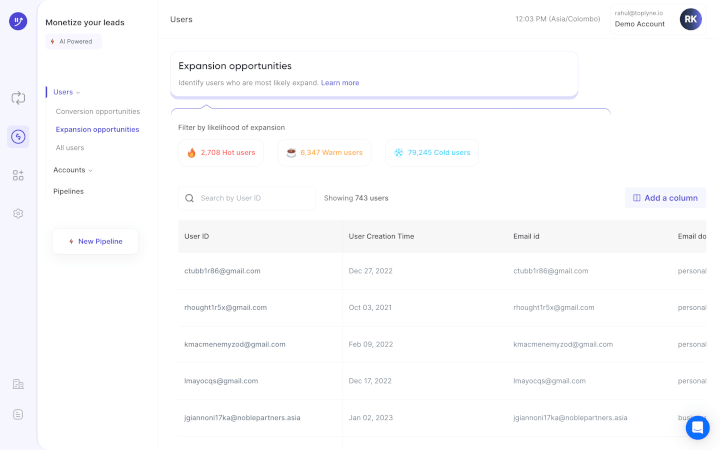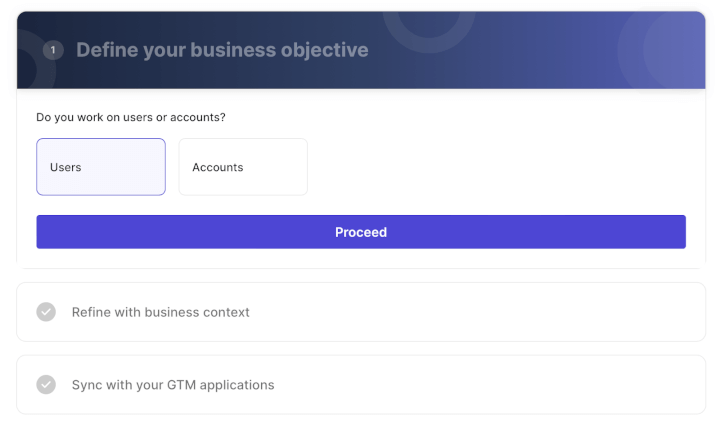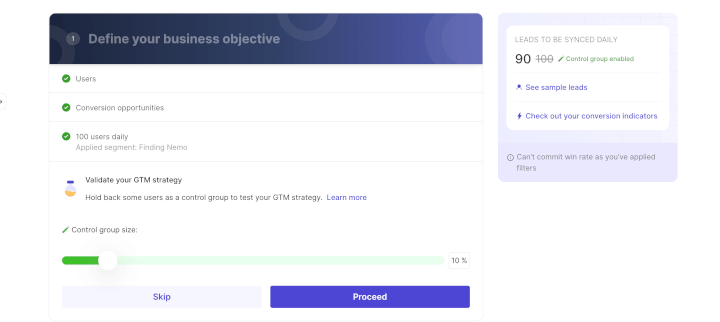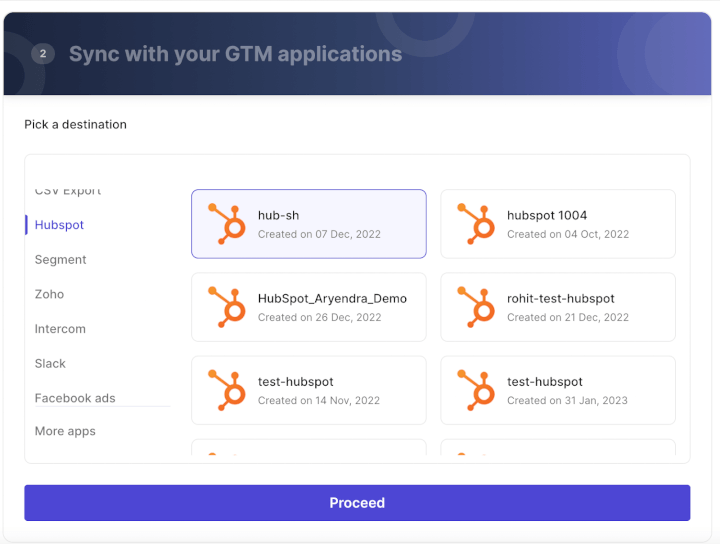Mastering Sales with Propensity Models: A B2B Guide

In the dynamic sales industry, surpassing competitors demands a reliance on more than just intuition. Achieving exceptional results and boosting your bottom line requires data-driven insights. These insights can help you identify high-potential leads, uncover cross-selling and upselling opportunities, and prevent use churn. So, if you want to elevate your sales team’s performance, it's essential to move away from guesswork and embrace the transformative potential of predictive analytics offered by sales propensity models.
Sales propensity models are influential tools that offer data-driven insights into your user base. With this knowledge, your sales teams can develop persuasive sales strategies and make well-informed decisions to drive success. However, to get the most out of propensity modeling, it is vital to know how to use it correctly.
In this article, we will talk about some practical tips for using the most popular types of propensity models in sales. We will discuss conversion propensity models, upsell and cross-sell propensity models, and churn propensity models. So, let's get started.
How to Use Propensity Models in Sales - Best Tips and Practices
1. Conversion Propensity Models
At the core of any successful sales strategy lies the ability to predict a prospect's probability of converting into a paying user. That's where conversion propensity models come in. They leverage historical conversion data and users’ product usage patterns to generate a propensity score, which helps predict a lead's propensity to buy. Conversion propensity models use a dataset of independent variables and generate results in the form of 0 and 1.
To develop a conversion propensity model, you must gather historical data on previous conversions, encompassing successful sales interactions and user characteristics. Random Forest and Logistic Regression are two data science techniques that can be employed for analyzing this customer data and generating results.
Here's how you can leverage conversion propensity models in sales:
- Collect Relevant Data: To maximize the accuracy of your propensity model, it is crucial to collect pertinent data from multiple touchpoints, such as website interactions, email responses, product usage platforms like Mixpanel and Amplitude, and social media engagements. This comprehensive approach will offer a holistic understanding of your customer base, their behavior, and preferences.
- Segment Your Leads: Use the model to determine the conversion probability of leads and rank them accordingly. Channel your sales resources towards leads with higher propensity scores, enhancing the likelihood of conversion. Customize your approach for each segment, considering their specific challenges and motivations.
- Personalized Messaging: After segmenting leads using the model, sales reps can craft tailored sales messaging and layer in marketing campaigns to establish meaningful connections that cater to the unique use cases of each lead. Leverage the insights collected from the model to emphasize the distinct benefits of your product that align with the lead's priorities, pain points, and ultimately use cases.
- A/B Testing: Continuous experimentation is crucial for refining your approach. Employ A/B tests to measure the effectiveness of different messaging and strategies. Use the results to optimize and fine-tune your conversion propensity model.
- Ask for Feedback: Promote transparent communication between your sales team and marketing team and ask for their feedback. Valuable input from them can assist in refining the model and enhancing its accuracy. This collaborative approach will help increase your conversion rate and yield better results from your sales and marketing efforts.
2. Upsell and Cross-Sell Propensity Models
After successful lead conversion, the focus shifts towards optimizing their value by using upselling and cross-selling strategies. Upsell propensity models are designed to predict the probability of users upgrading to higher-tier products. On the other hand, cross-sell propensity models forecast the likelihood of users purchasing additional and complementary products.
Advanced machine learning techniques like Neural Networks can effectively analyze user interactions and preferences. As a result, they can help generate valuable recommendations for upselling and cross-selling opportunities within these models.
Here's how you can leverage upsell and cross-sell propensity models in sales:
- Segment Your Users: Categorize users according to their usecases, personas, previous purchases, and interactions with your products. Creating customer segments will enable you to provide tailored recommendations for upselling and cross-selling.
- Get the Timing Right: Timing is crucial in presenting upsell and cross-sell opportunities. For example, you should consider offering an upsell to users after they have experienced success with their current plan and you find scope for them to find more value with a higher tier. On the other hand, cross-sell opportunities are when you find your users to be the ideal persona for a complementary product of yours and can help build a key use case for the same.
- Use a Value-Driven Approach: Effectively convey the benefits and the added value of the upsell or cross-sell offers. Demonstrate to users how the supplementary product or a higher tier of pricing aligns with their requirements and objectives.
- Educate Your Team: Ensure your sales team is proficient in identifying and capitalizing on upsell and cross-sell prospects. Equip them with training and tools to analyze data derived from upselling and cross-selling propensity models, enabling them to leverage it to their advantage. Help them in developing impactful strategies to promote upsell and cross-sell offerings effectively.
3. Churn Propensity Models
Churn propensity models are among the most important types of propensity models in sales. If used correctly, these models can help retain users and boost your company's long-term profitability. Churn propensity models are designed to help you determine which users are more likely to opt out of your business.
Machine learning algorithms like a Decision Tree can act as a powerful tool for analyzing past data and user behavior. It can accurately determine whether a user will likely churn, giving a simple “Yes or No” classification result.
Here's how you can leverage churn propensity models in sales:
- Early Detection: Utilize the model to strategically identify users who are at a high risk of churn at an early stage. Monitor customer behavior and closely observe the outcomes predicted by the model. Pay particular attention to indicators like declining engagement levels, diminished product usage, or instances of missed payments, as these can be significant warning signs.
- Create Personalized Retention Strategies: Customize your user retention strategies based on different user segments. Gain insights into the specific causes of potential churn and offer tailor-made solutions to resolve their issues.
- Adopt a Proactive Communication Approach: Take proactive measures to engage with users displaying early signs of potential churn. Demonstrate genuine care and resolve their concerns as soon as possible.
- Offer Incentives and Rewards: Offer special discounts and rewards to appreciate long-term users. It will enhance their user experience, encourage them to stay with your product and increase their customer lifetime value. For example, (pictory plug)
- Monitor the Model's Performance: Regularly assess the accuracy of your churn propensity model. Evaluate its performance, recalibrate when necessary, and incorporate new data to improve accurate prediction abilities.
The Tool To Implement Propensity Models In Sales Processes
Toplyne is a behavioral AI that uses propensity models to find enterprise pipeline in your self-serve funnel, upsell and cross-sell opportunities, and surface users at the risk of churn. Built on first-party product usage, CRM, billing, and third-party enrichment data.
Here’s how companies like Canva and Vercel generate sales pipeline from their self-serve funnel using Toplyne:
- Step 1/7: Create monetization playbooks to surface conversion and expansion opportunities (leads most likely to convert to paying customers, and teams most likely to grow into larger teams)

- Step 2/7: Choose the right leads to target – users (individual users) or accounts (a group of users with an organization).

- Step 3/7: Select the frequency at which you would want leads synced in your GTM apps.

- Step 4/7: Define how many leads you want by either the number of leads or your expected win rate, depending on your sales capacity and GTM strategy.

- Step 5/7: Build custom segments - Build custom segments based on And/Or logic at the deepest level of sub-properties within your product analytics.

- Step 6/7: Validate your GTM strategy - Hold back some users as a control group to test your GTM strategy.

- Step 7/7: Sync your product qualified pipeline into your GTM destinations - CRMs, sales & marketing execution tools, and customer engagement platforms.

Unlock the Power of Predictive Modeling With the Help of Propensity Models
Sales and Customer propensity models are gaining significant popularity in the sales industry today. These models, including conversion propensity, upsell and cross-sell propensity, and churn propensity models, offer sales teams the opportunity to improve efficiency, increase user engagement, and optimize retention strategies.
Incorporating data-driven insights, personalized approaches, and continuous refinement is crucial for leveraging these machine-learning models to drive sales excellence. Adopting these best practices and mastering the above-mentioned techniques will enable you to optimize your sales processes, elevate user engagement, and enhance your retention strategies.


.svg)









.png)